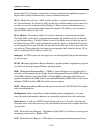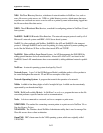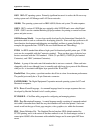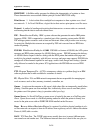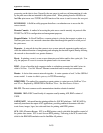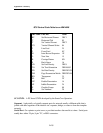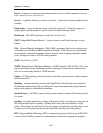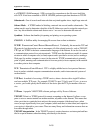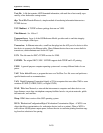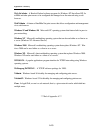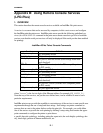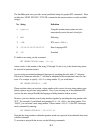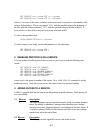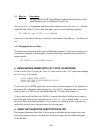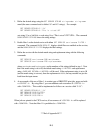
Appendix A: Glossary
A-18
e.g. BTRIEVE (ISAM manager). SPX is not used for connections to the file server itself; this
uses NCP. It has been extended as SPX-II. SPX/IPX perform equivalent functions to TCP/IP.
Subnetwork. One of several small networks that are joined together into a single large network.
Subnet Mask. A TCP/IP method of dividing a network into several smaller subnetworks. The
subnet mask is used to determine what bits of the IP Address are used to assign the network por-
tion. Any bits within the subnet mask that are set to 1 are used to determine the network.
Symbiont. Software that handles job queuing and printing on an operating system.
SYSCON. A NetWare utility for managing file servers from a client workstation.
TCP/IP. Transmission Control Protocol/Internet Protocol. Technically, this means the TCP and
IP protocols, but the term has come to encompass all of the related protocols, such as TELNET,
FTP, lpd, etc.TCP/IP is the basic communication language of the Internet. It can also be used as
a communications protocol in a private network. TCP/IP uses the client/server model of commu-
nication in which a computer user (a client) requests and is provided a service (such as sending a
Web page) by another computer (a server) in the network. TCP/IP communication is primarily
point-to-point, meaning each communication is from one point (or host computer) in the network
to another point or host computer.
TCP. Transmission Control Protocol. TCP is a highly reliable host-to-host protocol between
hosts in packet-switched computer communication networks, and in interconnected systems of
such networks.
TCP Port. A method of accessing a TCP/IP service, where a device with a single IP address
can have multiple TCP ports. For example, TELNET is port 23, lpd is port 515, etc.; to access
a service, you would specify the IP address of the device plus the TCP port number of the ser-
vice.
TCPware A popular VMS TCP/IP software package sold by Process Software.
TELNET. Telnet is a TCP/IP protocol for remote computing on the Internet. It allows a com-
puter to act as a remote terminal on another machine, anywhere on the Internet. This means that
when you telnet to a particular host and port, the remote computer (which must have a telnet
server) accepts input directly from your computer (which must have a telnet client) and output for
your session is directed to your screen. There are many library and information resources that are
accessible through telnet.
TELNET interpretation. In the TELNET protocol, certain characters are intercepted and han-
dled in a special manner, rather than being sent directly to the device.



